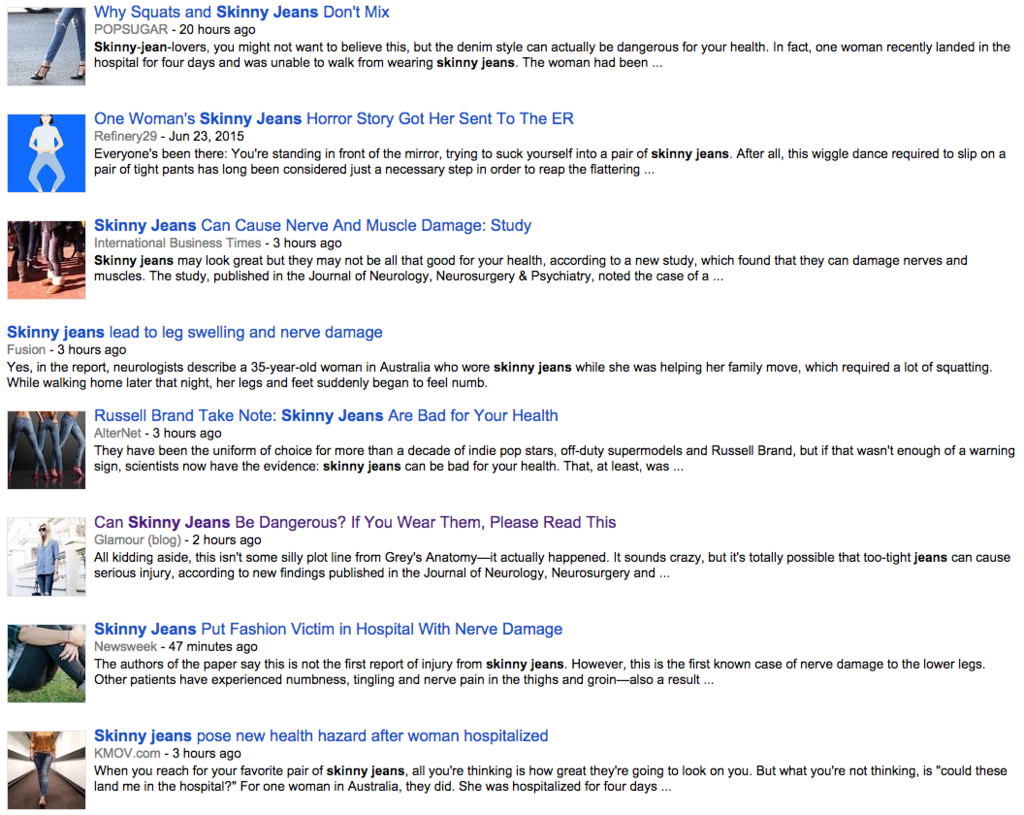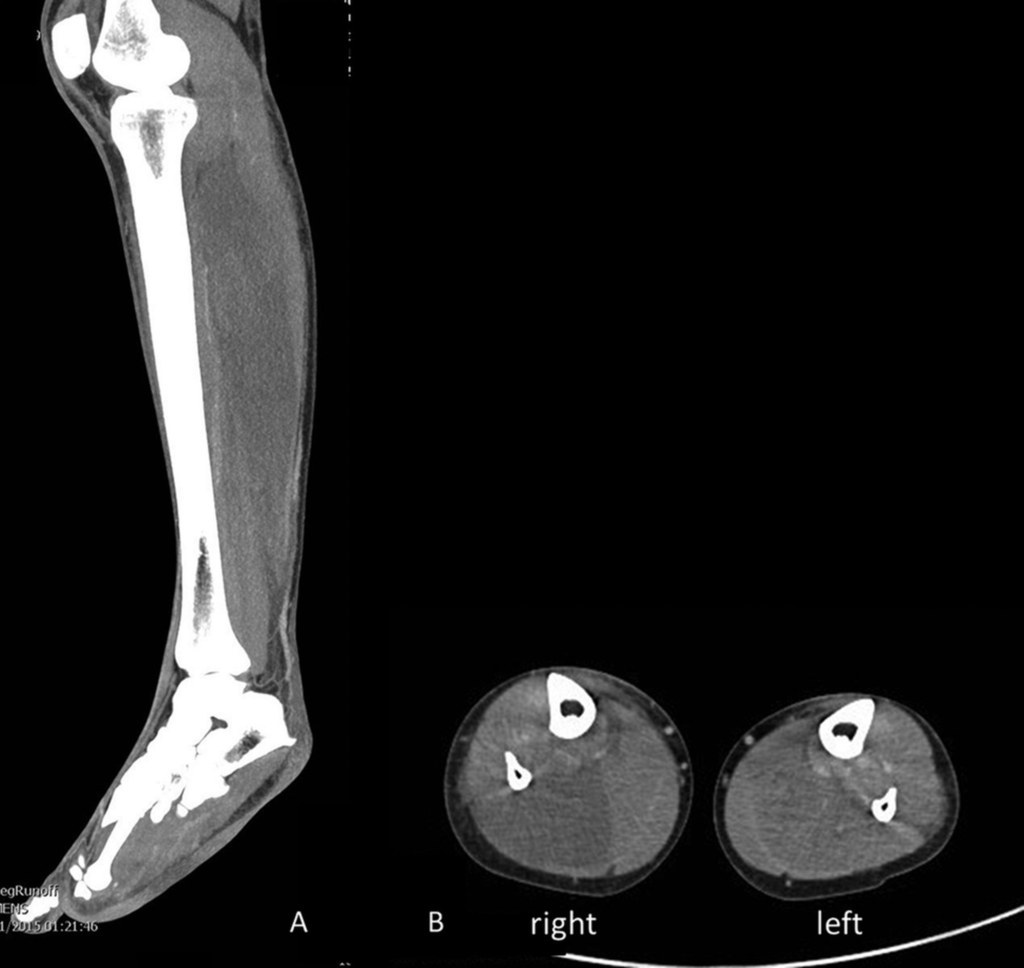
Readers all around the world were hit with a barrage of stories this week about the dangers of wearing skinny jeans.
"Can Skinny Jeans Be Dangerous? If You Wear Them, Please Read This," said Glamour magazine.
The Washington Post warned that "Blue jeans have been linked with health hazards for decades."
Yes, BuzzFeed covered it, too.

The story was everywhere. Skinny jeans could be dangerous! Set fire to your closet!

It's time to take a second look at the skinny jeans warning, and what, if any, evidence there is linking this type of clothing with health problems.
The stories all cite a single case study published in The Journal of Neurology Neurosurgery & Psychiatry. It's a reputable journal published by the same company as the BMJ.

The case study tells the remarkable story of an Australian woman who suffered health issues as a result of repeated squatting while wearing skinny jeans.

Suzie Gage, a post-doctoral researcher at the University of Bristol, explained in The Guardian why a single case study is not considered scientific evidence.
In terms of strength of evidence, a case study like this of just one patient is at the bottom of the pyramid of evidence. And it's pretty obvious why – if only one person wearing skinny jeans reports a problem, out of the huge number of people who wear them, this suggests that actually it's a pretty rare occurrence and most people are just fine.
Gary Schwitzer, the publisher of HealthNewsReview.org, told BuzzFeed News that single case studies are "not meant to be every day sources of prime time news for the masses. And that's what happened with this single tight jeans case study."

He said it's not hard to find examples of remarkable single cases documented in medical journals. These publications are a place for physicians to share what they see and learn.
I'm sure we could find journal manuscripts describing multiple cases of accidental impaling by improper use of power nail guns, or mangling of limbs by improper use of blenders or Cuisinarts, or, more likely, multiple cases of bunions/ingrown toenails and more from ill-fitting shoes
His point is that anything can happen once or a few times, but that doesn't mean it's a valid scientific or medical phenomenon.
This case study brought back memories for Schwitzer. Thirty-one years ago he saw a story he'd worked on get dropped by CNN for one based on a single case study about "a woman experiencing nerve problems attributed to wearing jeans that were too tight."

